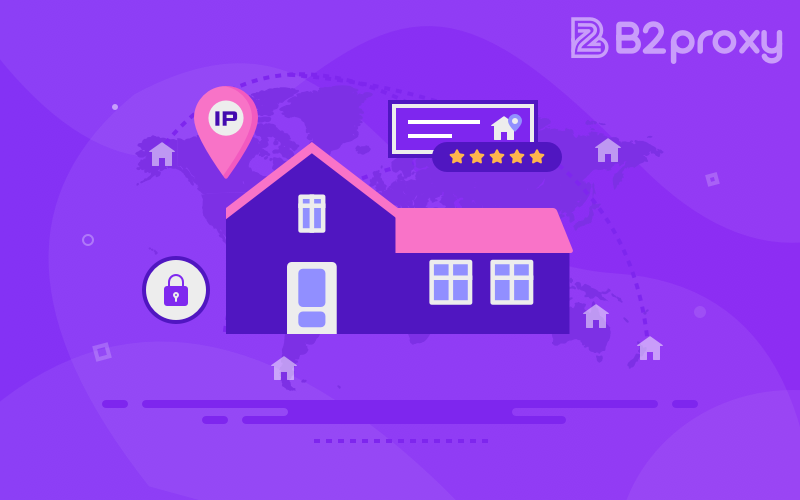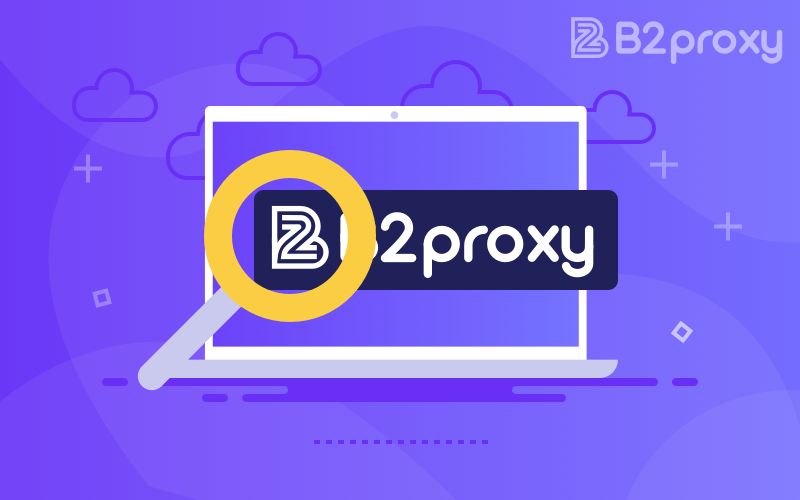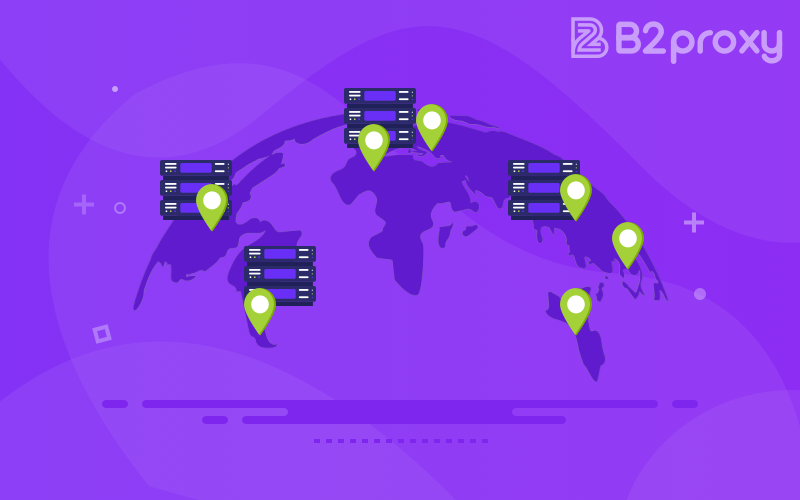
What’s the Difference Between HTTP and SOCKS5 Protocols? Understand the Key Factors in Proxy Protocol Selection
What’s the Difference Between HTTP and SOCKS5 Protocols? Understand the Key Factors in Proxy Protocol Selection
 July 25.2025
July 25.2025

<p style="margin: 4px 0px; font-family: 等线; font-size: 16px; line-height: 2em;"><span style="font-size: 15px;letter-spacing: 0;vertical-align: baseline">When choosing a proxy IP service, besides focusing on IP types (such as residential IPs, static IPs, rotating proxies) and performance indicators (like bandwidth and concurrency), the choice of proxy protocol is also a key factor affecting user experience and efficiency. Currently, the mainstream proxy protocols in the market are HTTP and SOCKS5. They differ significantly in design logic, application scenarios, and security capabilities.</span></p><p style="margin: 4px 0px; font-family: 等线; font-size: 16px; line-height: 2em;"><a href="https://www.b2proxy.com/pricing/residential-proxies" target="_self"><span style="font-size: 15px;font-weight: bold;letter-spacing: 0;vertical-align: baseline">B2Proxy</span></a><span style="font-size: 15px;letter-spacing: 0;vertical-align: baseline"> offers high-quality proxy IP resources that support both HTTP and SOCKS5 protocols, helping users flexibly deploy in different network environments to achieve secure and stable data transmission. This article will deeply analyze how these two protocols work and their practical application differences.</span></p><h3 class="paragraph text-align-type-left tco-title-heading 3" style="line-height: 2em;"><span style="font-size: 19px;letter-spacing: 0;vertical-align: baseline">What is an HTTP Proxy?</span></h3><p style="margin: 4px 0px; font-family: 等线; font-size: 16px; line-height: 2em;"><span style="font-size: 15px;letter-spacing: 0;vertical-align: baseline">An HTTP proxy is a proxy protocol built on the application layer, specifically designed for web browsing. It mainly handles HTTP or HTTPS traffic and can read and analyze request content, such as headers, URLs, cookies, etc. This "understandability" makes HTTP proxies very suitable for data scraping, content filtering, traffic analysis, and other uses.</span></p><p style="margin: 4px 0px; font-family: 等线; font-size: 16px; line-height: 2em;"><span style="font-size: 15px;letter-spacing: 0;vertical-align: baseline">Since it only handles HTTP-type traffic, it performs efficiently when browsing web pages, calling APIs, and accessing websites. However, it does not support non-HTTP protocols such as FTP, SMTP, etc.</span></p><p style="margin: 4px 0px; font-family: 等线; font-size: 16px; line-height: 2em;"><span style="font-size: 15px;letter-spacing: 0;vertical-align: baseline">Typical HTTP proxy use cases include: web scraping, API data collection, website access control, content review, and log auditing.</span></p><h3 class="paragraph text-align-type-left tco-title-heading 3" style="line-height: 2em;"><span style="font-size: 19px;letter-spacing: 0;vertical-align: baseline">What is a SOCKS5 Proxy?</span></h3><p style="margin: 4px 0px; font-family: 等线; font-size: 16px; line-height: 2em;"><span style="font-size: 15px;letter-spacing: 0;vertical-align: baseline">SOCKS5 is a more underlying general-purpose proxy protocol operating at the transport layer, without parsing application-layer content. That is, it does not care what protocol or data is being transmitted but forwards traffic as is. Therefore, it can support multiple protocols including HTTP, HTTPS, FTP, SMTP, POP3, UDP, etc., and has strong compatibility and flexibility.</span></p><p style="margin: 4px 0px; font-family: 等线; font-size: 16px; line-height: 2em;"><span style="font-size: 15px;letter-spacing: 0;vertical-align: baseline">SOCKS5 also supports more advanced authentication mechanisms and offers stronger security. In addition, it can handle UDP traffic, making it suitable for businesses with high demands on speed and real-time performance, such as game acceleration, cross-border communication, high-frequency trading, etc.</span></p><p style="margin: 4px 0px; font-family: 等线; font-size: 16px; line-height: 2em;"><span style="font-size: 15px;letter-spacing: 0;vertical-align: baseline">Common SOCKS5 use cases include: multi-protocol crawlers, anonymous browsing, cross-border email synchronization, encrypted data transmission, P2P applications, etc.</span></p><h3 class="paragraph text-align-type-left tco-title-heading 3" style="line-height: 2em;"><span style="font-size: 19px;letter-spacing: 0;vertical-align: baseline">Key Differences Between HTTP and SOCKS5 Protocols</span></h3><p style="margin: 4px 0px; font-family: 等线; font-size: 16px; line-height: 2em;"><span style="font-size: 15px;letter-spacing: 0;vertical-align: baseline">HTTP proxies are "aware" of what you are accessing and can identify, optimize, or restrict traffic. SOCKS5, on the other hand, is a completely transparent tunnel, suitable for scenarios that require high compatibility or transmission of diverse protocols.</span></p><p style="margin: 4px 0px; font-family: 等线; font-size: 16px; line-height: 2em;"><span style="font-size: 15px;letter-spacing: 0;vertical-align: baseline">HTTP proxies are only suitable for web-based applications, while SOCKS5 supports a wider range of protocol types, including UDP, making it more stable in various non-web tasks.</span></p><p style="margin: 4px 0px; font-family: 等线; font-size: 16px; line-height: 2em;"><span style="font-size: 15px;letter-spacing: 0;vertical-align: baseline">In terms of security, SOCKS5 supports username and password authentication and has stronger identity verification capabilities. HTTP proxies rely more on basic authentication methods and are relatively limited in scope.</span></p><h3 class="paragraph text-align-type-left tco-title-heading 3" style="line-height: 2em;"><span style="font-size: 19px;letter-spacing: 0;vertical-align: baseline">How to Choose the Right Proxy Protocol?</span></h3><p style="margin: 4px 0px; font-family: 等线; font-size: 16px; line-height: 2em;"><span style="font-size: 15px;letter-spacing: 0;vertical-align: baseline">If your tasks mainly involve web scraping, API calling, content monitoring, and other HTTP-type applications, choosing an HTTP proxy will meet your needs with simpler configuration and higher deployment efficiency.</span></p><p style="margin: 4px 0px; font-family: 等线; font-size: 16px; line-height: 2em;"><span style="font-size: 15px;letter-spacing: 0;vertical-align: baseline">However, if your business involves non-HTTP protocols such as FTP file transfer, UDP data processing, multi-protocol crawling, cross-border email transmission, or requires higher anonymity and security, SOCKS5 is undoubtedly the more appropriate choice.</span></p><p style="margin: 4px 0px; font-family: 等线; font-size: 16px; line-height: 2em;"><span style="font-size: 15px;letter-spacing: 0;vertical-align: baseline">For enterprises, deploying both HTTP and SOCKS5 proxies in diversified scenarios can greatly improve task adaptability and stability. Choosing a service provider that supports both protocols is particularly important.</span></p><h3 class="paragraph text-align-type-left tco-title-heading 3" style="line-height: 2em;"><span style="font-size: 19px;letter-spacing: 0;vertical-align: baseline">Conclusion</span></h3><p style="margin: 4px 0px; font-family: 等线; font-size: 16px; line-height: 2em;"><span style="font-size: 15px;letter-spacing: 0;vertical-align: baseline">Understanding the difference between HTTP and SOCKS5 is the foundation of building a reliable proxy architecture. The former is suitable for structured web requests, while the latter supports more complex and highly anonymous multi-protocol communications. Choosing a dual-protocol, stable proxy service provider can greatly enhance your business efficiency and system stability.</span></p><p><br/></p>
You might also enjoy

How Cross-Border E-Commerce Can Optimize Logistics and Price Comparison with IP Proxies
Residential proxies with unlimited bandwidth enable cross-border e-commerce to optimize logistics, monitor prices, and support efficient data-driven decisions.
October 27.2025
The Best IP Proxy Services of 2025: Comprehensive Review and Comparative Analysis
B2Proxy redefines 2025 proxy standards with fast, secure, and AI-powered management, delivering reliable global connections and flexible proxy server solutions.
October 27.2025
Why Businesses Cannot Do Without Proxy Services: Five Key Commercial Applications
Discover how proxy services support businesses in market research, ad verification, brand monitoring, data collection, and secure browsing with free trial and a
October 23.2025






